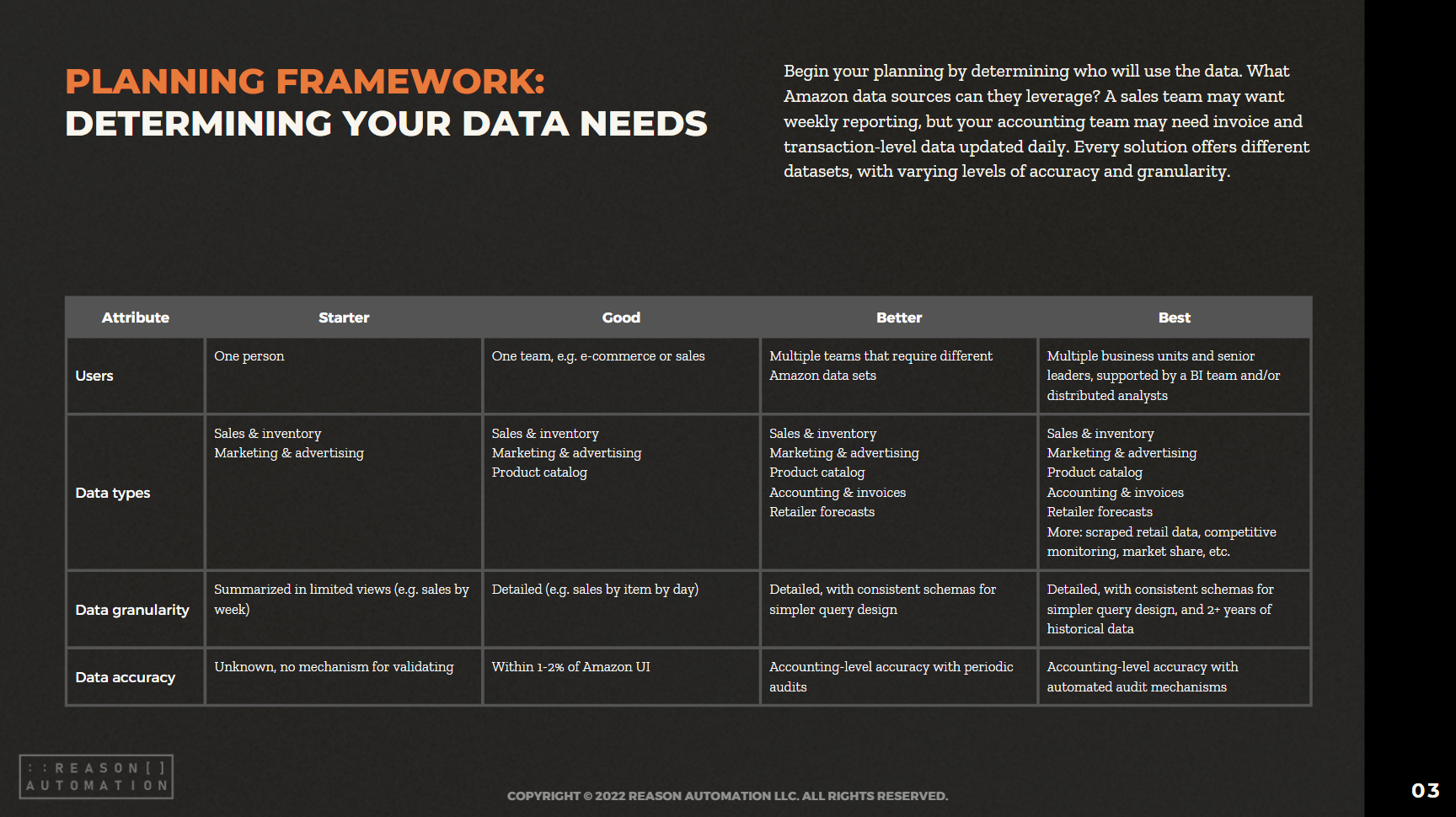Amazon Retail Analytics: What Vendors Need to Know
Data is vital for any ecommerce business looking to grow, and Amazon Retail Analytics offers many important metrics to brands who want to better understand sales and traffic.
So what is ARA, and how did recent developments with Brand Analytics impact both sellers and vendors? This guide provides a basic breakdown.
What Is Amazon Retail Analytics?
Amazon Retail Analytics (ARA) is the reporting platform Amazon offers to vendors that provides detailed data on sales, traffic, forecasts, and more.
In 2020, Amazon renamed it Amazon Brand Analytics. But in August 2022, Amazon relaunched and rebranded ARA with a brand new dashboard and data tables.
Amazon Brand Analytics still exists and is available to both sellers and vendors (unlike Amazon Retail Analytics, which is only available to vendors), but instead of sales, traffic, and forecasts, it offers reports on search terms, market basket analysis, repeat purchases, and U.S. demographics. To learn more about Brand Analytics, visit our complete guide on it: What Is the Amazon Brand Analytics API?
ARA Basic vs. ARA Premium
There is now only one ARA option that is free to vendors, but in the past there were two options: Basic and Premium. The main difference between ARA Basic and ARA Premium was that the latter included enhanced reporting features. Premium went beyond basic data on sales and traffic and offered additional metrics like Net PPM, geographic sales insights, and real-time sales. ARA Basic was also limited in how many reports users could request and how far back their historical data goes (7 days for Basic versus 1 year for Premium).
ARA Basic was free, whereas Premium reportedly started at $30,000 per year.
How Do I Get ARA Premium?
There is no longer a premium option for ARA with the relaunch. In the past, in order to get access to Premium, the brand’s account team had to reach out to Amazon to make a request.
How to Use Amazon Retail Analytics
You can find a more comprehensive guide to the August 2022 relaunch of ARA and how to use these reports here: Retail Analytics relaunch, August 2022
Some of the top changes for the new Amazon Retail Analytics suite compared to previous reporting include:
Different values
Ratio metrics are deprecated
Category and subcategory are deprecated
Standardized reporting periods
Fresh (F3) and Business data must be requested
Different historical data availability
Follow the links below for more detail on specific reports within ARA:
How to Access Other Critical Data
While Amazon makes all sorts of great data available to sellers and vendors through ARA, that doesn’t mean this data is easy to access. Unfortunately, companies have to manually download and combine reports in order to gain actionable insights into the data.
Fortunately, there are a number of methods you can take advantage of to handle this issue. We’ve put together a whitepaper available for free download below that will help you figure out which one best fits your needs.


